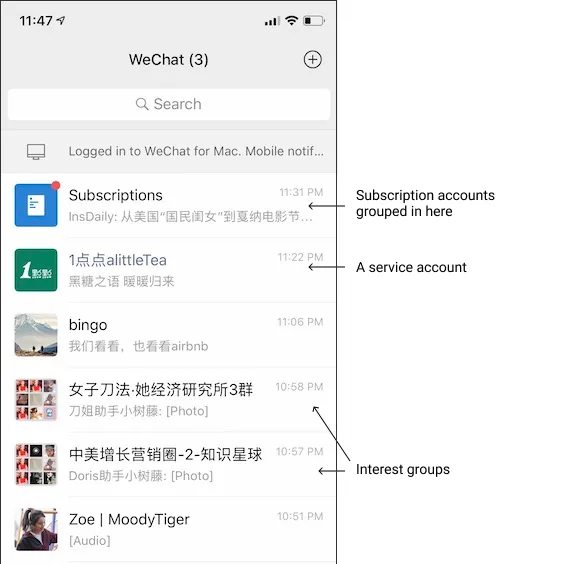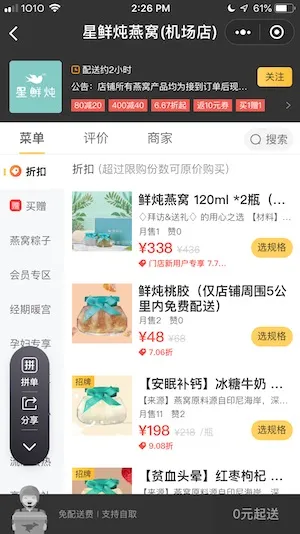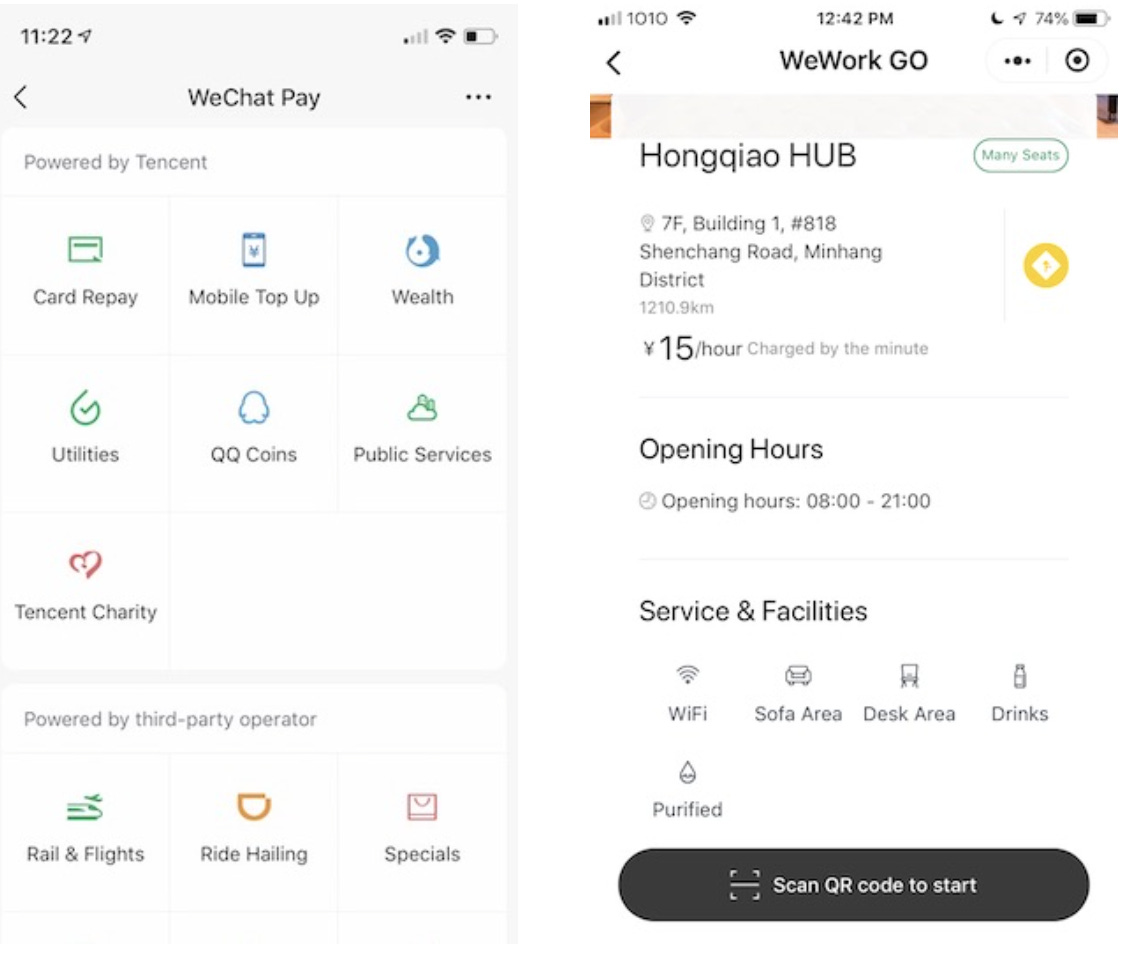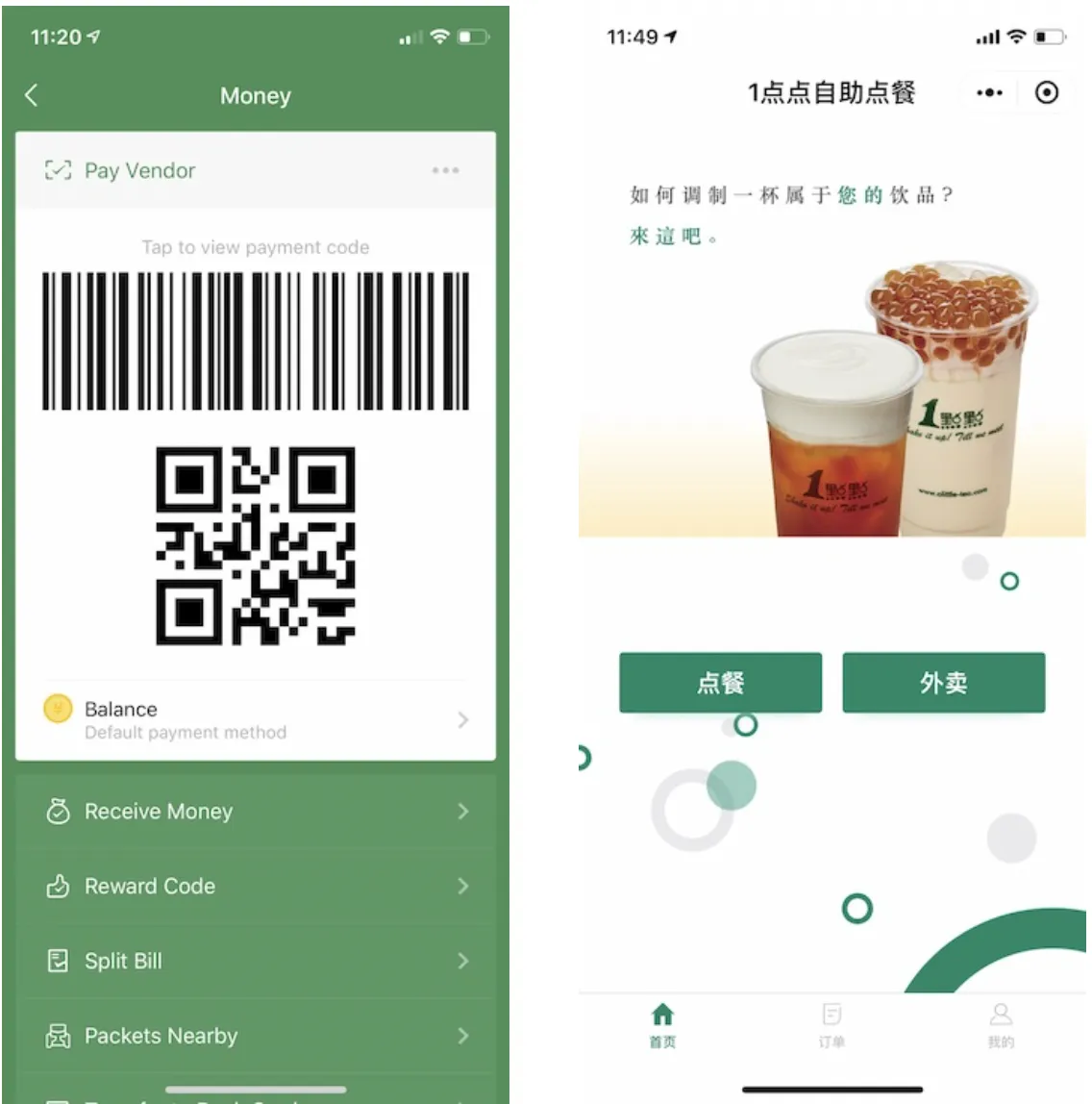Welcome to the Newsletter Series. Ivy and I co-write a periodic newsletter. This piece is adapted from an edition of it, dated when the newsletter came out.
Previously when we came to Japan we were both impressed by how futuristic Japan seemed. This time around, after coming from China, Japan actually felt surprisingly behind. It’s hard to explain what we mean by this without first painting a picture of the current state of China. To give you a glimpse, we’ll walk through an example day of our lives highlighting the interactions with WeChat, a key distinguishing aspect of daily life in China.
9 am
Ivy yawns as her eyes squint open from the rays of light peeking through the window. As part of her wake up routine, she picks up her phone and browses WeChat for new messages, Moments (like FB timeline, below left), Time Capsules (like FB/IG/Snap Stories, below right), and Subscriptions (RSS feed or news aggregator kind of).
WeChat in China is not just personal socialization, it’s also used for work, so your Moments is filled not only with personal photos but also company marketing and events, and you’ll get messages from coworkers on work related stuff. Who needs work life separation right?



11am
After getting updated on the day and finishing morning grooming, it’s time to get some food. We pull up the Meituan (restaurant delivery) Mini Program and search up what we want to eat.

Mini programs are third party apps in the WeChat ecosystem that anyone can build. You can search to find a specific mini program or many of them get you to open them contextually via chat links or QR codes. In the Meituan one, we’re able to choose what we want to order, pay with WeChat, and track progress of delivery all within the mini program.
12:30pm
It’s time to head out for the day. Do we have everything we need? Check our pockets: phone ✅. That’s all we need when we go out in China!
We call a Didi (China’s Lyft/Uber) through the WeChat Pay integration to the nearest WeWork. Integrations (below left) are like mini programs but built in for easier access, with all payments automatically handled by WeChat. There are ones for booking trains, hotels, bikes, and more.
At WeWork we scan the QR code at the door to open the mini program (below right) and start our session. Starting the session tracks your time for payment while giving you access to the wifi details and letting you open the doors in the coworking space via the program. Through the mini program you can also get discount coupons, chat with customer service, and find nearby locations.

At WeWork Ivy sees her notifications lighting up so she checks her groups. All errands are done on WeChat since the Airbnb host, the gym promoter she ran into on the street, family, professional interest groups, tonight’s dinner attendees, this weekend’s hired driver, and many more connections are all on WeChat.
Info on how businesses use WeChat, skip this box if you’re not interested
WeChat group chats have been turned into a business by many. There are thought leaders that monetize off exclusive group chats by having members pay to join and businesses use groups for onboarding, membership, retention, and everything in between by creating groups of potential customers or existing customers and sending out carefully curated content. Businesses would often have multiple WeChat groups: one serving more as an interest group, another for potential customers, and another for VIP members.
For example, a makeup business might want to publish content on how to apply foundation so they create an official account and post on there. They then loop their subscribers into a WeChat group for better engagement, discussions on beauty, and invites to events. The users that show more interest will get pulled into another WeChat group that focuses on presenting products, how to best use them, and service the users who are considering making purchases or have made their first purchases. These users upon hitting a certain engagement level may be added to another group of VIP members where they are sent the newest products, promotions, and are encouraged to give feedback, share, or review for the company.
What’s different about this usage of groups compared to email and other kinds of marketing campaigns in North America is it’s not just one way communication from the business. You get connected with others with a shared interest like a community and can chat amongst yourselves, and you can also respond back to the business via the chat.
Something else that has risen in popularity in China is Social Commerce. This term means buying and selling with someone that is in your network of people you know. In third and fourth tier cities (less populated, lower GDP, cheaper standard of living), companies are rising by utilizing community managers to create local neighborhood WeChat groups to sell products through it. Groceries is a common example. The community manager receives the whole order and people in the neighborhood come to pick up their order from the manager. These managers are typically housewives or retired women who are social and trusted in the community.
4pm
Time for a boba break. There happens to be a great place just downstairs! As the person in the small one person shop makes our order, we scan the QR code on the counter and enter the amount to pay the shop. A device nearby robotically announces how much we just paid. Some other shops opt for charging you instead of having you enter the amount yourself. When they put in your order, they use a scanner to scan your QR code (below left) and it charges you the right amount directly.
This boba shop, 1 点点, also has a mini program (below right), where you can make orders for pick up or take out.
Don’t worry this payment QR code has expired ;)

Info on how businesses use WeChat, skip this box if you’re not interested
When you pay a business, you also automatically connect with their service account on WeChat (below left for the bubble tea shop). Through it you hear about promotions and new products you might care about.
There are two kinds of Official Accounts: subscription accounts and service accounts. Any Chinese national or businesses anywhere can open them.
Subscription accounts are for communication and information sharing. Users follow them and read their posts. Their main advantage is that they can push articles or messages once every 24 hours. They’re best for companies or influencers who want to push content more frequently and are the only option for individuals. However, subscription accounts are listed in the “Subscriptions” chat folder and users do not get a chat push notification for new content. Instead, they have to open the “Subscriptions” folder to see the updates.
Service accounts only allow businesses to send out 4 messages/month to users but they appear directly as a chat notification. They are best for businesses that want to use advanced features. There's more APIs allowing businesses to build out their own application and e-commerce functionalities. In the below bubble tea service account photo there are three buttons at the bottom that say "A Little Story", "A Little Fun", and "Make an Order".
Often times, when purchasing from a store, you are also asked to add and/or share the store’s WeChat account for a discount. Instead of their service account, this would be a personal account, meaning their content also shows up in your Moments feed. Check out the Moments feed of the store where I purchased glasses from (below right)! The content blends in perfectly and looks exactly like user generated content.
WeChat makes it very easy to unfollow an account, it just takes one swipe. Therefore stores do not spam you. Online EQ is a term in China meaning being able to reach and engage customers, all without bothering, annoying, and losing them.

6pm
We’re supposed to meet up with some friends for dinner. They shared a Dian Ping (China’s Yelp) link in our group chat. Clicking it opens the mini program, which gives us all the information on the restaurant, including the recommended and top dishes along with pictures. Of course it’s another hot pot place. Seems like all the top places in China are either western food or hot pot.
As we walk to the restaurant, I see my phone battery is low. When your entire life lives on your phone, this is a problem. Luckily the restaurant has a stand with battery packs for rent. Scan the QR code, it opens the Energy Monster mini program, and you can unlock a battery pack to borrow during your meal. It charges you when you return it based on usage via WeChat Pay.
At the restaurant you scan a QR code for your table, order and pay from the restaurant mini program, and food is brought to you without you ever having to interact with a server.
After a delightful meal we walk with our friends to their car. They seem to have forgotten where it was in the parking garage. No worries, they scan the garage’s QR code, enter in their license plate, and it informs them exactly where they parked, as well as lets them pay their parking fee.
We drive out of the parking garage and head to the entertainment destination of the night: karaoke. Once again you can scan the QR code for your room to order food and drinks and pay, as well as pick songs to add to the queue.
This of course is only a snapshot of the current state of China, there’s so many other facets to examine life on. The convenience of daily tasks just particularly surprised us during our stay this time around.
In the next edition we contrast some of what we’ve noticed about life in Japan.
P.S. If your interest has been piqued, here’s another good read on how WeChat is used in China. Or if you want to know what opportunities are available to you in China, Ivy wrote an article on this.